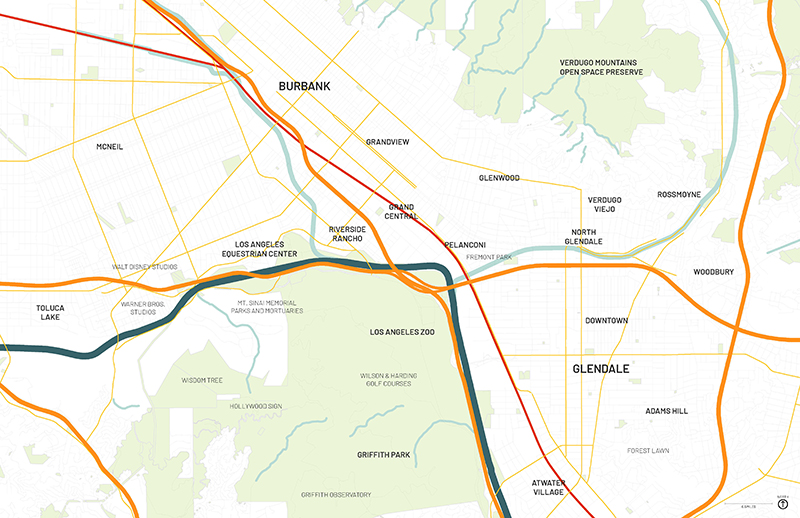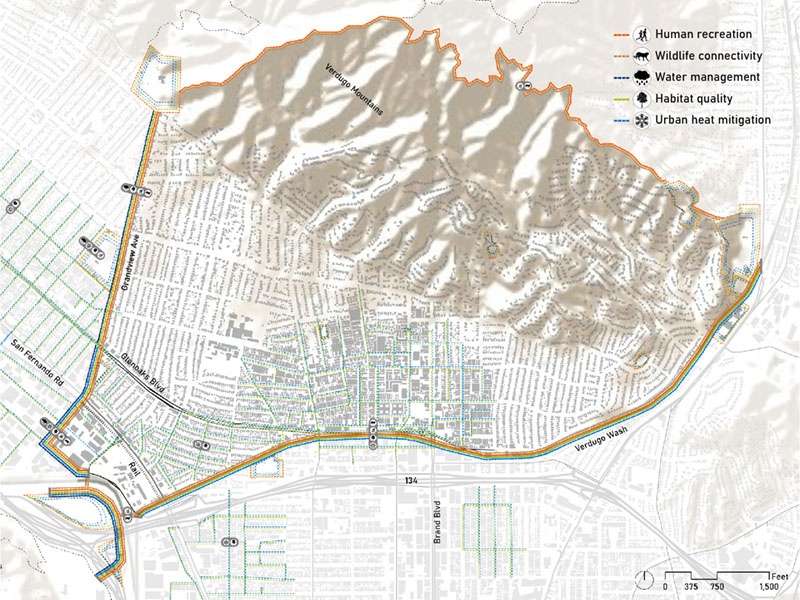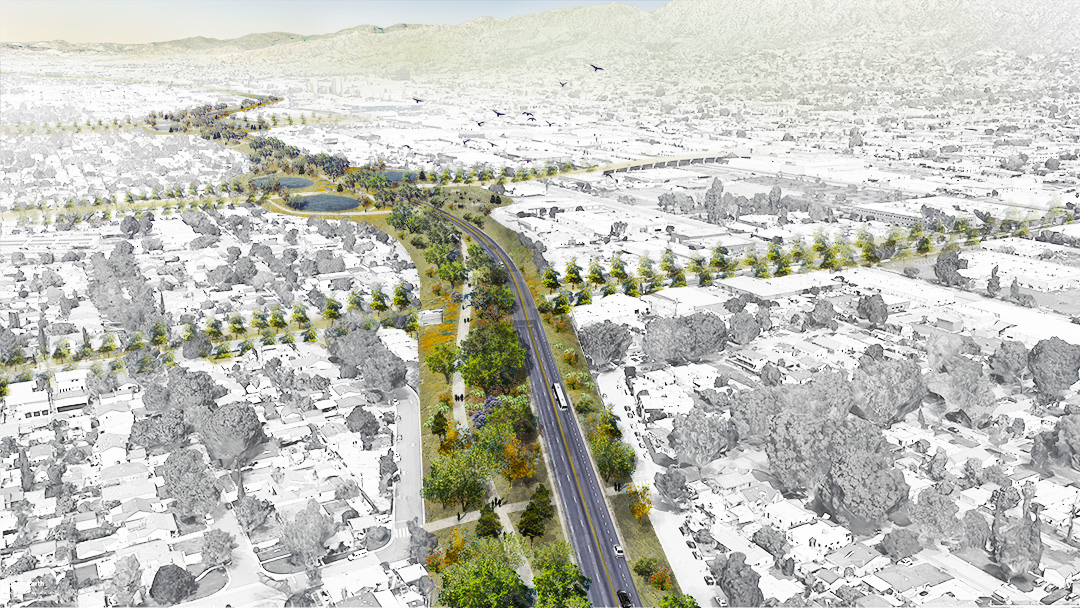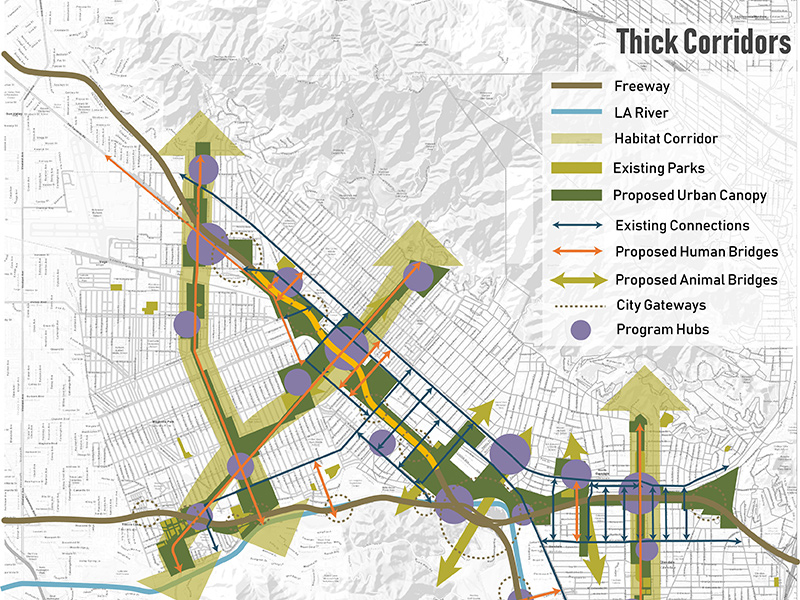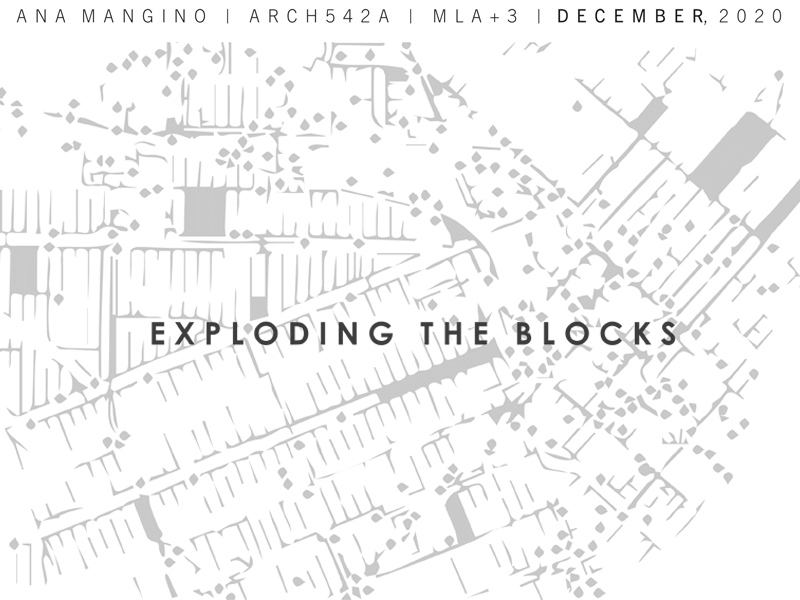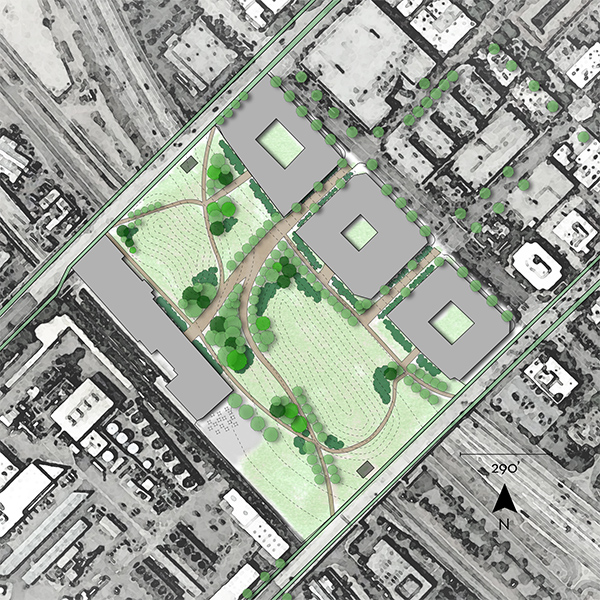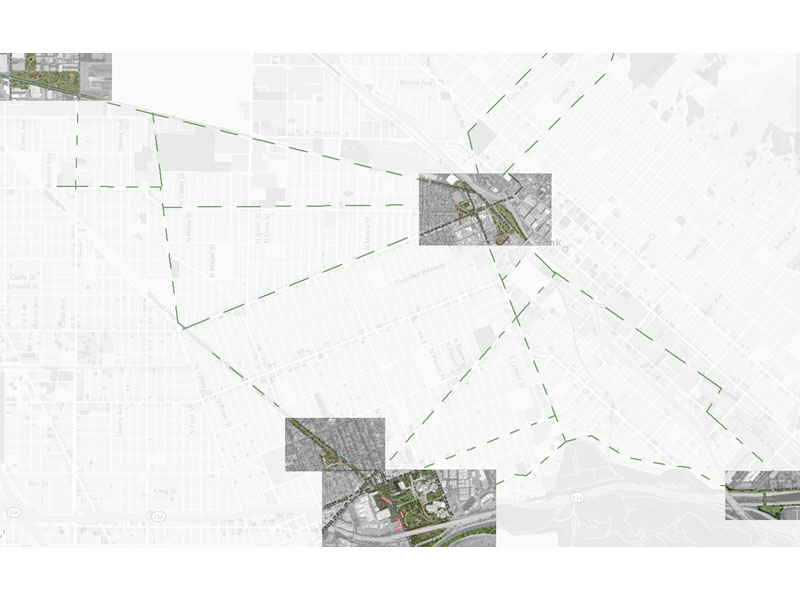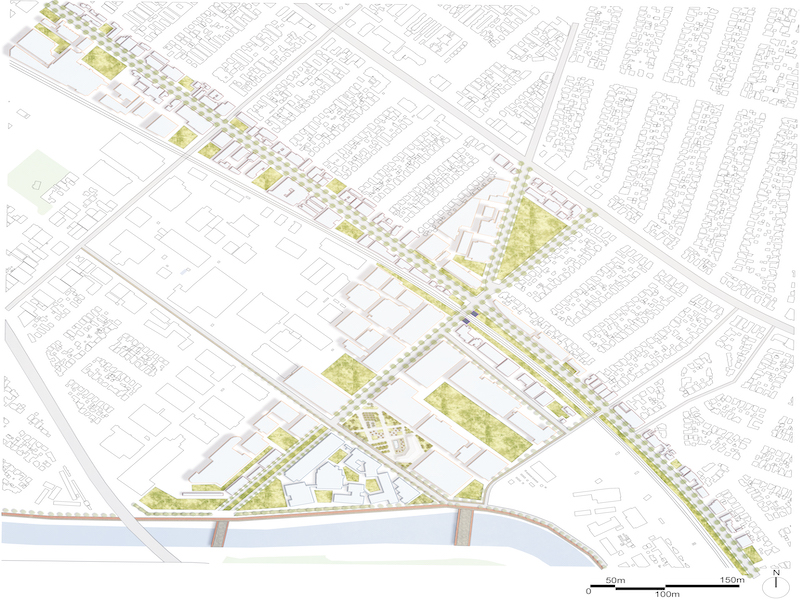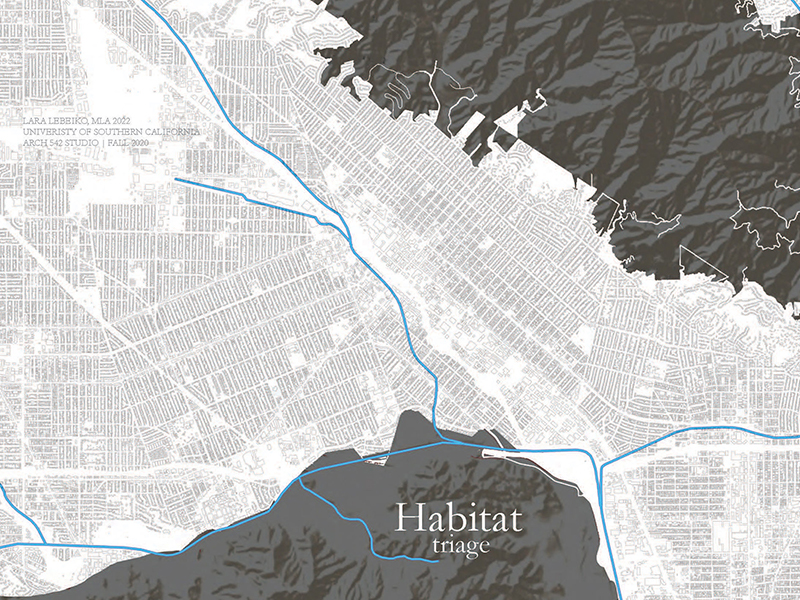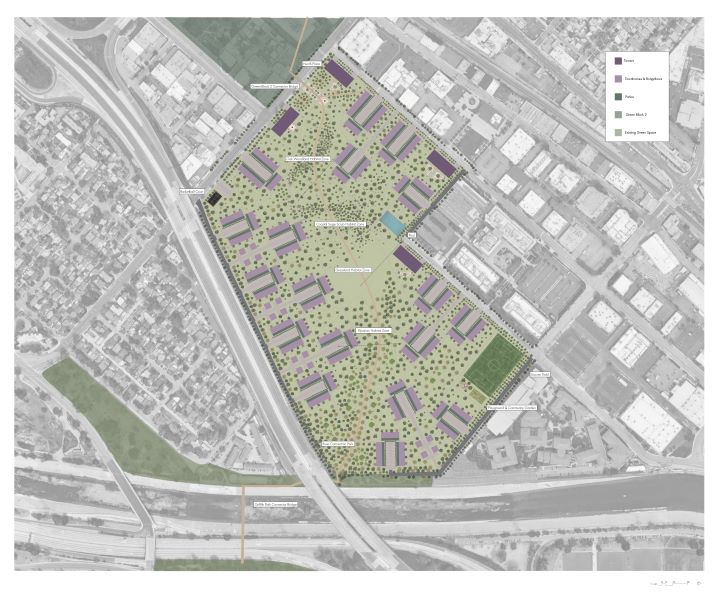Categories
Urban Design Studio: Edge Conditions
The current inequities of our civic realm are often the result of our infrastructural systems, whether through forced displacement policies, air and soil pollution, damaged ecosystems, or inaccessibility of parks and transit. Often our infrastructure divides communities and creates edges and boundaries, limiting social and environmental interaction. Best laid plans for managing floods, for creating housing, and for transportation, have often led to unfortunate results. This burden is disproportional on our most underserved communities.
Interstate-5, a main artery through the State of California, cuts a path through many City of LA, Glendale, and Burbank communities. North of Griffith Park, I-5 crosses the LA River and the Ventura Freeway near where the Verdugo Wash and the Burbank Western Channel meet the LA River. Further, this area includes a critical rail connection that links Southern and Northern California. Together, these six elements create a series of community divides and various edge conditions.
Despite the proximity of the massive Griffith Park, residents in these communities cannot access the park given the urban divides and edge conditions between communities. The steep topography of the park forms a barrier as well. The layering of railroads, flood channels, and eventually highways into this landscape occurred relatively quickly over the course of the 20th century as the LA River and most of its tributaries were channelized. While edges can be valuable in urban contexts, defining districts or neighborhoods, these edges seem to divide communities. This studio seeks to understand and evaluate the edges and create urban design proposals to mitigate or strengthen the edges.
